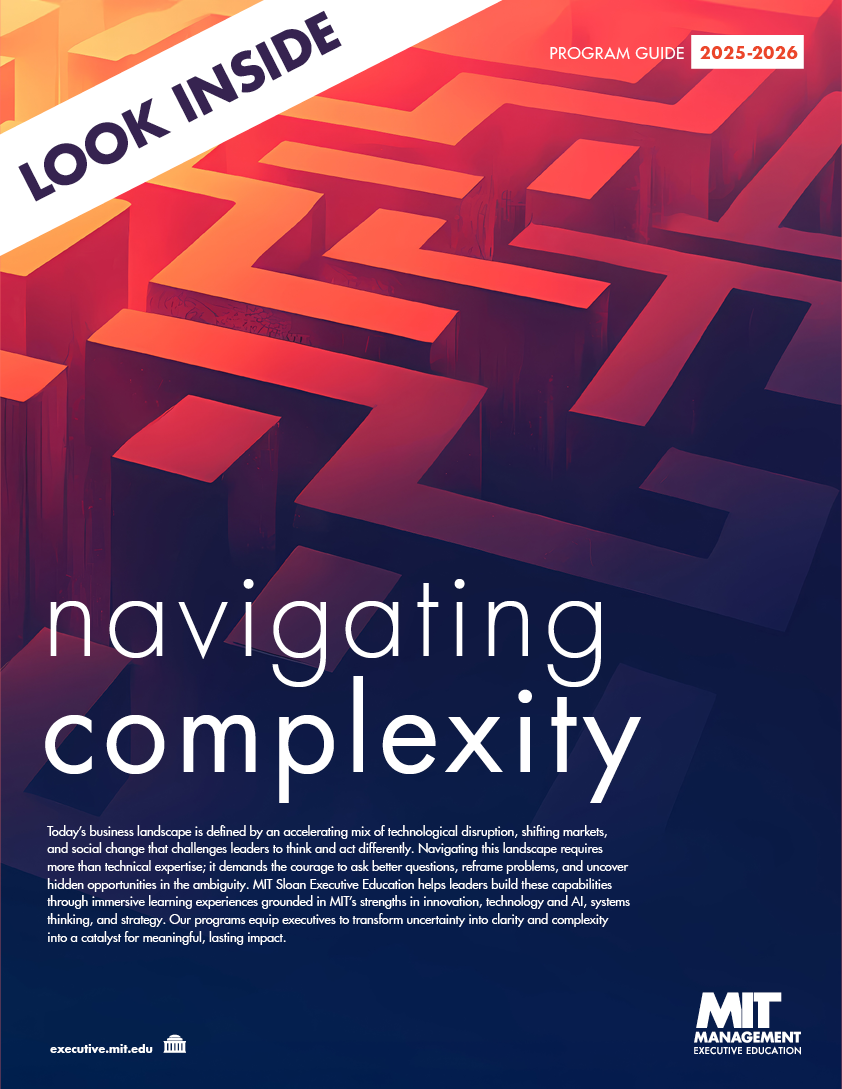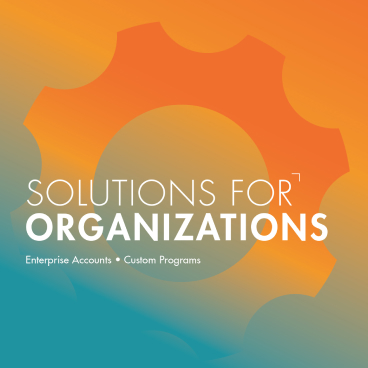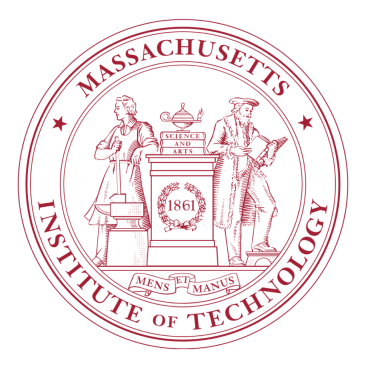The best way to learn a new concept often bears little resemblance to the classic classroom model, where an instructor tells information to passive learners. Active learning — which means interacting with the material and encouraging engagement from the class — is a powerful option.
Several leading institutions apply the concept of active learning in their programs. For example, MIT Sloan Executive Education offers Action Learning, which seeks to ensure participants can apply what they've learned to real-world business situations. It's a way to follow through on the MIT motto of "mens et manus," Latin for "mind and hand" and symbolizing both knowledge and practicality.
When you're studying important new subjects, whether in-person or online, it can pay to take courses that apply active learning techniques. Grasping new information and making it work for you is a more natural fit when you've engaged directly with the material.
What is active learning, and what are its benefits?
Active learning means encouraging interaction and participation during class time in various ways. A variety of activities that go beyond the traditional lecture or reading format all qualify as active learning. These include:
- Hands-on exercises and demonstrations.
- Debates with fellow course participants.
- Collaborative group projects.
- Feedback sessions to discuss key points with instructors.
- Any other discussion or group exchange of ideas.
The general theory behind these methods is that it's more compelling and engaging for learners to take an active hand in their own education. Making choices and taking the initiative represent different types of thinking relative to passively hearing or reading information. Even in classes that heavily feature lectures and readings, breaking up that content with experiences is a valuable move.
The benefits of active learning over passive learning can include:
- Improved retention and ability to recall information from lessons.
- Better engagement between participants and their instructors.
- A deeper ability to apply critical thinking and other thinking strategies.
Intellectually fulfilled and engaged learners are better equipped to take lessons into the real world. This can prove especially true in scenarios like MIT Sloan's Action Learning model, which prioritizes finding realistic applications for newly introduced concepts.
Read more: See how in-depth learning can illuminate new ideas like generative AI technology.
How active learning works
Active learning means turning teaching from a one-way transfer of ideas into an interactive conversation. To see how this process works in practice, it's worth looking at the example of MIT Sloan’s Action Learning model.
Action Learning as a concept has been refined and developed over decades, with the term coined in 1972 and the "mens et manus" philosophy of MIT dating back to the university's founding in 1861. In MIT Sloan Executive Education courses, participants embrace Action Learning's principles of practicality and interaction to build tactics, models, and strategies that apply to real-world issues.
Examples of Action Learning concepts entering MIT Sloan Executive Education’s course material include:
- The "Beer Game" featured in Understanding and Solving Complex Business Problems, which is an interactive simulation of the beer industry supply chain. Taking the form of a tabletop game, the exercise demonstrates supply chain principles and the circumscription of individuals within systems.
- The "Paper Airplane Game" which is part of Creating High Velocity Organizations. This is a hands-on peer activity that helps participants understand the application of leadership methodologies in a business context.
- Hal Gregersen's catalytic question theory, explored within Questions are the Answer. This methodology is all about asking the correct question to drive results, which means participants can't silo themselves away, but rather must interact with others, now using AI to augment their thinking, but not abandoning the interpersonal angle.
While these are highly specific examples of active learning work as practiced through MIT Sloan's Action Learning principles, there are a wide variety of more general opportunities to apply the concept, adding feelings of community and creativity into traditional instruction. These ways include:
- In-class debates about key concepts.
- Experiential learning programs.
- Interviews with subject matter experts.
- Breakout peer group discussion sessions.
Traveling beyond the standard lecture or reading models can introduce countless new practices and methods into education, online or in-person.
Read more: Discover how leaders are being coached to new levels of success.
Making the most of active learning, in person or online
The practices of active learning may seem at first glance to favor physical coursework. It's simpler to interact with fellow participants for group work in an in-person classroom, or perform tabletop activities like the "Beer Game," for instance. However, instructors can intentionally design their course material to incorporate active elements, even when they employ remote technology to teach online.
Interactivity and participation are the key elements that make the learning process "active," and these are still available in online settings. Digital conferencing allows groups to collaborate and discuss subject matter in real-time, and interactive features in educational software let participants have their voices heard during in-class exercises. Providing feedback points to instructors and peers is simple today, no matter the format.
Any course experience where the instruction breaks from a traditional lecture-and-reading template is active in nature. Instructors at institutions like MIT Sloan Executive Education know how to build interactive elements into their offerings, ensuring that online and in-person learners receive the same type of engaging education.
This focus on engagement is what sets online offerings at trusted institutions like MIT Sloan apart from less intentionally designed or smaller-scale digital coursework. The quality of the experience should be a foremost consideration when picking where to study.
Read more: See the value participants have taken from active learning work while studying for an Executive Certificate, entering the Advanced Management Program (AMP), or earning an Advanced Certificate for Executives (ACE).
Practicing active learning in executive education
Adding active learning principles to executive education can help the lessons have value long after the course has ended. MIT Sloan's Action Learning exercises have five specific goals:
- Applying theories learned in coursework to real-world challenges and scenarios.
- Developing project management skills through structuring and solving problems.
- Collaborating effectively, creating spaces that facilitate open conversation.
- Learning to lead even when business situations are ambiguous.
- Reflecting on lessons learned to lock in personal growth.
Taking courses from MIT Sloan Executive Education allows participants to experience active learning principles interspersed with lectures. The result is a well-rounded learning experience and an expanded view of any subject. Courses optimize retention and provide insight to ensure lessons are useful in the real world.
The faculty members who administer these courses are experts in their respective fields. It's common for an MIT Sloan Executive Education course to be led by a leading authority who has developed the theories that make up the curriculum. Active learning strategies and overall faculty knowledge combine to create an ideal teaching and learning environment.
Read more: See why MIT Sloan Executive Education is the preeminent setting to build your skills as part of a research community.
Explore your potential through active learning strategies
Whatever skill you're most excited to add to your resume or area of business you're most keen to study, there's likely an executive education course focused on the subject. Building your executive abilities is a valuable undertaking, whether you're most interested in thriving in your current role, moving up the organizational ladder, or seeking a new position.
MIT Sloan Executive Education offers a variety of compelling courses, from self-guided online sprints to extensive non-degree certificate programs. Built using the principles of the active learning process and the MIT Sloan Action Learning methodology, these learning experiences are designed to equip participants with the knowledge they need to thrive in the professional world.
Find an executive education course that fits your needs and enroll to take the next step in your professional growth.








